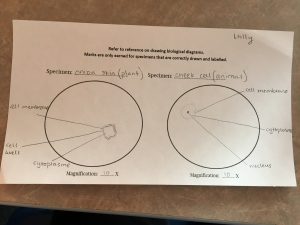I believe that statistics have a big role in today’s society. They give us valuable information on everyday things, they provide important results to research projects but, they can also mislead and sway people by giving out false information about important subjects. After reading the article I have learned a lot about statistics and how important they are in our world. They are very helpful to people everywhere wanting to know the opinions of others or facts that are happening around the world. Something new that I learned from the article was the fact that some statistics can be true, but misleading because of the choice of wording in the results. Even though statistics can be very helpful, they can cause different types of problems, like that example. Other problems that statistics can cause is false information from the survey conducted. They can have unfair survey questions that cause you to not express your real opinion and also can use bad sampling to find their information which means that the information collected wasn’t from a diverse group of people.
Monthly Archives: May 2017
Cancer Story: Ovarian Cancer
11.1 Factors Influencing Data Collection Blogpost
First question “Should there be Sunday shopping (in retail businesses not now permitted to be open on Sunday)?”
Second question “If there is to be Sunday shopping (in retail businesses not now permitted to be open on Sunday), should it be on every Sunday or on only the six Sundays immediately before Christmas?”
When I first read the questions from the survey, I thought that they were a bit difficult to read because of the choice of wording in both of the questions. I also thought that they were very similar in the sense that they could have just been combined into one question. After learning about influencing factors, I now think that one of the biggest influence factor in this survey was the use of language. The question wasn’t presented in a way that was 100% clear, so some people who didn’t learn English as their first language might feel confused after reading the question. In the future, when reading and interpreting survey data I will make sure that I understand the question completely before answering so that my given opinion isn’t different from my real opinion.
https://en.wikipedia.org/wiki/Nova_Scotia_Sunday_shopping_referendum,_2004
Whirligig Final Project Sway
DNA edible model lab
- How are chromosomes, DNA, and genes related to one another?
A chromosome is a structure that is made up of DNA as well as proteins. These chromosomes are found in the nucleus of the cell and contain and organize genes (segments in DNA) which do things like build bones, enable muscles to move, control digestion and keep your heart beating.
- Explain what these pieces represent:
- Licorice – The licorice represented the Sugar/phosphate backbone in DNA
- Marshmallows (each colour) – The marshmallows represented the bases which are necessary to create DNA. The green marshmallows represented the guanine, the pink marshmallows represented the cytosine, the yellow marshmallows represented the adenine and the orange marshmallows represented the thymine. Only the yellow (A) and orange (T) marshmallows could bond together and only the green (G) and pink (C) marshmallows could bond together.
- How did this activity help you understand the structure of DNA?
This activity helped me understand and fully recognize the structures in a DNA example. It also really helped me understand the importance of having the base pairs be ones that bond together because if not, it will cause a genetic mutation
observing cells lab
- Using your sketches and the photos you took of your plant and animal cells, explain:
- What do animal cells look like under the microscope? What cell structures are visible? Animal cells look like(purple because of the methylene blue) little floating dots (not close together) under the microscope. The only cell structures that were visible under my microscope was the cytoplasm, the cell membrane and the nucleus.
- What do plant cells look like under the microscope? What cell structures are visible? Plant cells look like bent ovals stuck together under the microscope and the only visible cell structures were the cell membrane and the cytoplasm
- How can you tell plant cells and animal cells apart (if you only see them under the microscope)? From my observations, the way that I could tell plant cells and animal cells apart was from their shapes and how far apart they were from the other cells. The plant cells seemed to be really close together in a bent oval shape whereas the animal cells were spread father apart and their shape was more circular.
- We used methylene blue on the animal cell. Why was it important to treat animal cells with this compound? I think we used methylene blue on the animal cell to stain it so that it was easier to see the cell structures. If we hadn’t done that, it would be hard to tell apart the air bubbles and the real cheek cells.
Why didn’t we use it on the plant cells? I predict that the reason we didn’t use the substance with the plant cells is that the onion skin plant cells were already purple and easy to spot through a microscope. - Reflection:
What did you learn while doing this lab? During this lab, I learned a lot of new things about cells. I got to observe and experience the physical difference between plant and animal cells in person and also I realized that even though we can’t see them with our naked eye, everything is made up of tiny, interesting cells.
What questions arose while doing this lab? What are you curious about? Some of the questions that arose whilst doing this lab were who discovered that everything was made up of cells? Can cells be artificially made? How? Can an object lose cells without having any consequences? Is there a certain amount of cells you need to live and be happy.





